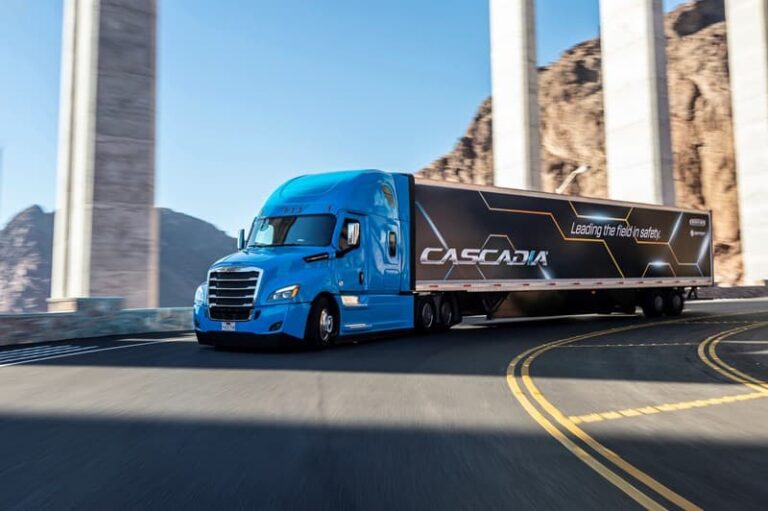WASHINGTON — Even though deployment of automated heavy-duty trucks, including self-driving trucks, being developed for long-haul trucking operations is likely years or a decade away, the General Accounting Office Thursday urged federal agencies to take additional steps to prepare for potential workforce effects
“Most technology developers said they were developing trucks that can travel without drivers for part of a route, and some stakeholders said such trucks may become available within five to 10 years,” the GAO said in a report on a study it had conducted. “Various technologies, including sensors and cameras, could help guide a truck capable of driving itself. However, the adoption of this technology depends on factors such as technological limitations and public acceptance.”
The GAO said it conducted the study because automated vehicle technology may eventually make commercial trucking more efficient and safer, but also has the potential to change the employment landscape for nearly 1.9 million heavy and tractor-trailer truck drivers, among others.
The GAO said it was asked to examine the potential workforce effects of automated trucking, but didn’t say who requested it.
The report noted that the U.S. Department of Transportation had been consulting with the Department of Labor to conduct a Congressionally-directed analysis of the workforce impacts of automated trucking by March 2019.
The GAO said stakeholders it interviewed predicted two main scenarios for how the adoption of automated trucks could affect the trucking workforce, which varied depending on the future role of drivers or operators.
“Technology developers, among others, described one scenario in which self-driving trucks are used on highway portions of long-haul trips,” the study report said. “Stakeholders noted this scenario would likely reduce the number of long-haul truck drivers needed and could decrease wages because of lower demand for such drivers. In contrast, groups representing truck drivers, among others, predicted a scenario in which a truck would have an operator at all times for complex driving and other non-driving tasks, and the number of drivers or operators would not change as significantly.”
However, the study found that those stakeholders lacked consensus on the potential effect this scenario might have on wages and driver retention, adding that most stakeholders said automated trucking could create new jobs, and that any workforce effects would take time — providing an opportunity for a federal response, such as any needed policy changes.
For the study, GAO interviewed officials from DOT and DOL, as well as a range of stakeholders, including technology developers, companies operating their own trucking fleets, truck driver training schools, truck driver associations and workforce development boards.
As a result of the study, GAO made four recommendations for executive action:
- The Secretary of Labor should collaborate with the Secretary of Transportation to continue to convene key groups of stakeholders to gather information on potential workforce changes that may result from automated trucking as the technology evolves, including analyzing needed skills and identifying any information or data gaps, to allow the agencies to fully consider how to respond to any changes. These stakeholders could include, for example, representatives of other relevant federal agencies, technology developers, the trucking industry, organizations that represent truck drivers, truck driver training schools, state workforce agencies, and local workforce development boards.
- The Secretary of Transportation should collaborate with the Secretary of Labor to continue to convene key groups of stakeholders to gather information on potential workforce changes that may result from automated trucking as the technology evolves, including analyzing needed skills and identifying any information or data gaps, to allow the agencies to fully consider how to respond to any changes.
- The Secretary of Transportation should consult with the Secretary of Labor to further analyze the potential effects of automated trucking technology on drivers to inform potential workforce-related regulatory changes, such as the requirements to obtain a commercial driver’s license or Hours of Service requirements (e.g., the maximum hours commercial truck drivers are permitted to work).
4. The Secretary of Labor should consult with the Secretary of Transportation to share information with key stakeholders on the potential effects of automated trucking on the workforce as the technology evolves. These stakeholders could include, for example, representatives of other relevant federal agencies, technology developers, the trucking industry, organizations that represent truck drivers, truck driver training schools, state workforce agencies, and local workforce development boards.
The Trucker News Staff produces engaging content for not only TheTrucker.com, but also The Trucker Newspaper, which has been serving the trucking industry for more than 30 years. With a focus on drivers, the Trucker News Staff aims to provide relevant, objective content pertaining to the trucking segment of the transportation industry. The Trucker News Staff is based in Little Rock, Arkansas.








